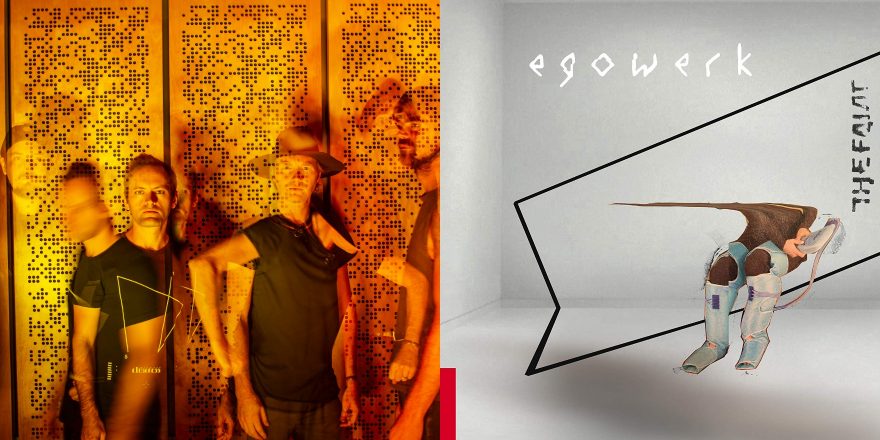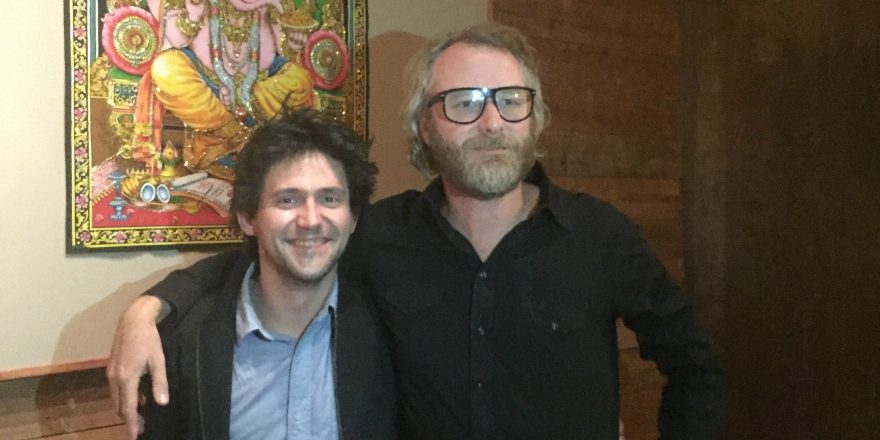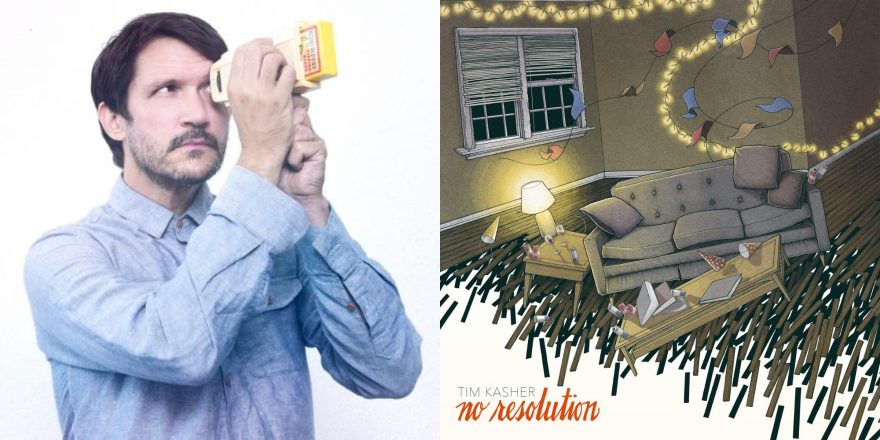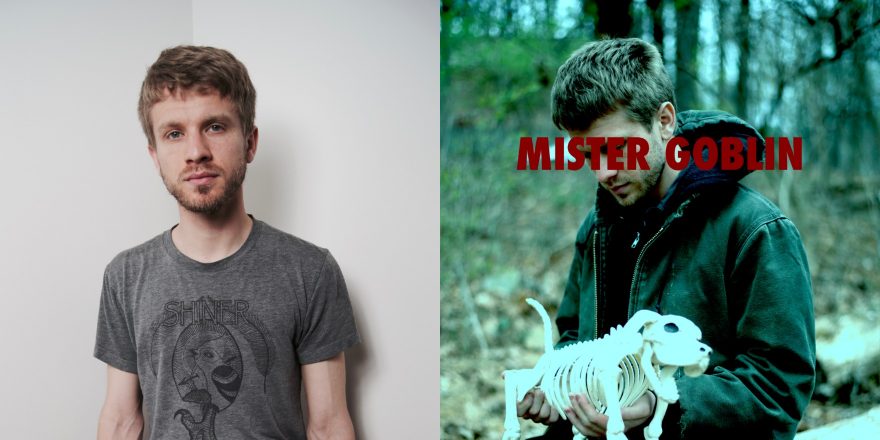Hear First is Talkhouse’s series of album premieres. Along with streams of upcoming albums—today’s is The Faints’s Egowerk — we publish statements from artists and their peers about the mindsets and impressions that go into, or come out of reflection on, a record. Here, drummer and producer Clark Baechle writes about how his move from Omaha to Philadelphia impacted the creation of their new album, which you can listen to right here.
—Annie Fell, Associate Editor, Talkhouse
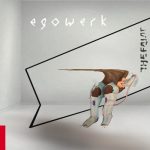
Audio Player
- Child Asleep
- Chameleon Nights
- Life’s a Joke
- Alien Angel
- Egowerk
- Own My Eyes
- Source of the Sun
- Another World
- Quench the Flame
- Young & Realistic
- Automaton
In November of 2016, shortly after the band returned from our tour backing the release of Capsule: 1999-2016, I packed a car with my essential belongings and drove from Omaha to Philadelphia to move in with my beautiful partner, and now fiancée, Elizabeth. We had been dating long distance and decided it was time to change that. The rest of the band still lived in Omaha, so this was a big decision and clearly would alter the way we made music moving forward. Every decision that we make seems to resonate through to other parts of our lives and I think that my move to Philadelphia, in the end, was a catalyst for change that positively shaped our new album Egowerk.
This would be the first proper album that the current line up (myself, my brother Todd Fink, Dapose, and Graham Ulicny) would make together. We wrote three new songs to add to the Capsule… collection and thought those turned out great, but we knew we were going to have to approach this album differently so that we could make progress while I was away.
Luckily we had already discussed making the album a little more electronic, so a solution came to us quite quickly. We won’t use any real drums! Using only programmed drum beats would obviously steer the record in a more electronic direction as well as make it easier to work on while at home in my tiny studio apartment. As the drummer of the band, it was a pretty big decision to make but I was all for it. We had already decided that I would be producing and mixing the record and I was excited to jump deep into that role.
To get the ball rolling, we blocked out some time on our calendars for a couple of ten-day writing sessions in Omaha. The goal of each session was to meet up at our recording studio, Enamel, and create most of the music for a new song each day. A typical day would start with everyone kind of tinkering around in a room full of synths until some sort of “ah ha!” moment happened where we felt inspired by something enough to use it as a starting point. We’d spend time arranging other synth, guitar, and vocal ideas around the original part and record pretty much everything that we thought of just to capture ideas as they were happening. Eventually we’d realize it was getting late, so we’d quickly move all the parts around in the computer to create a basic structure and call it a day. The next afternoon we’d come back in and start a completely new idea.
The difference between this and what we tended to do in the past is that typically we would allow ourselves to tinker forever, passing up good ideas in hopes of possibly coming up with better ones. When we did come up with something, we’d start right where we left off day after day which often leads to people getting burnt out on the song all together. I think by forcing ourselves to work really quickly (at least for us) and recording everything as we went, we were constantly capturing the initial excitement we all had when the ideas first happened. And although it wasn’t intentional, the rushed recording process also created a bit of a lo-fi vibe that I think in the end helped keep our punk roots present in an otherwise predominantly electronic album.
We didn’t quite meet our goal of a song every day, but by the end of the second session we had a starting point for about fifteen different songs. Actually at this point, it might be a little misleading to call them songs. Many of them were more like audio collages, cut together from an assortment of inspired moments we happened to capture. We made an instrumental version of each with working titles like “Jam 1” and “Jam 11,” etc., and handed them over to Todd to write lyrics and melodies to. He’d cut up the instrumentals, move sections around, pitch shift parts to change chords or the key of the song etc. so that the music would work with the new vocal parts.
After a couple months of passing the songs back and forth via email, we had a rough sketch for each song pieced together. I had been trying to make progress on the mixes in Philadelphia but my headphones just weren’t cutting it and studio time wasn’t really affordable (compared to using our own studio for free). I realized that it would be much cheaper to fly back to Omaha multiple times and mix the record at Enamel.
My first trip back was fairly utilitarian. I spent a couple of weeks in the studio reprogramming synth sounds, restructuring the songs to match the new vocal arrangements, and getting the foundation for mixes started. There were loads of sounds that had been pitch shifted and/or mangled enough that they needed to be remade. Luckily I really enjoy doing sound design, and although it felt tedious at times, for the most part, the end result was a vast improvement and worth the effort.
I later realized in fact, that this phase of the recording process was probably the most beneficial to me as a producer/mixer. As I went through each track, I found that I was getting quicker and quicker at figuring out how to fix odd problems or deciding not to fix them at all. By the end of that session, I felt I had an arsenal of new mixing tricks and “wisdom,” for lack of a better word, that would stay with me forever that I wouldn’t have learned if it hadn’t been for the disjointed way we went about making this record. I dove into the mixing phase feeling more apt to handle the challenge, and after a few more trips back to Omaha, the album was eventually done.
It’s clear that living across the country from the rest of the band definitely, and hopefully positively, impacted the outcome of this album. What initially seemed to be an obstacle became an opportunity for me to fully embrace a new role “behind the board” rather than the drum kit and I think it has been a pivotal experience in my life. Now as the release date approaches, and I’ve had a sufficiently long and needed break from the songs, I’m excited to put the album on my record player and listen to it in its entirety on release day, which has become something of a tradition of mine. I hope that some of you will be listening too!
—Clark Baechle
(Photo Credit: Bill Sitzmann)


